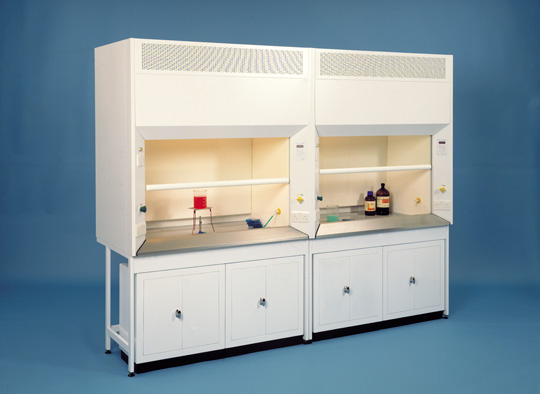Bigneat complement their range of Fume Hoods of a ductless/ recirculatory filtration design with a range of Fume Cupboards. The latest design features include radiused corners for outstanding airflow performance.
Performance
Fully compliant with BS EN 14175-3:2003 these fume cupboards provide some of the best containment levels in their class.
What are they?
Essentially, fume cupboards, carbon-filtered cabinets and Class I and II biological safety cabinets are open-fronted units. They work by sucking air from the laboratory, past the worker standing in front of the unit, over the working surface where the airborne contaminants are likely to be generated and pushing the air into the environment (back into the laboratory or outside the building depending on the type of unit).They are designed to remove airborne contaminants (be they gases, vapours, fumes, smells, dusts or aerosols) from the working environment before they can be breathed in by workers or their colleagues. They should also be capable of greatly reducing the concentration of any dangerous components before the air is vented to the environment.
How do they work?
They draw air from the laboratory and over the work being performed in the cupboard, carrying gases, vapours, fumes and dusts away from the work environment through a duct to the roof of the building. Here a fan blows the air up through a chimney and discharges it at high velocity 3 metres above the roof.
Because fume cupboards are ducted they are fixed in position and for all practical purposes cannot be moved.
bio-equip.cn




